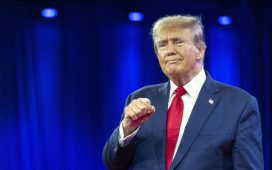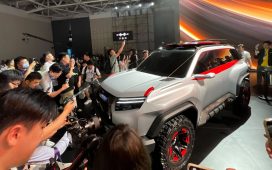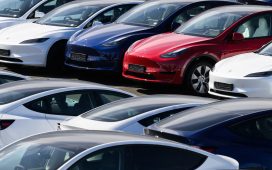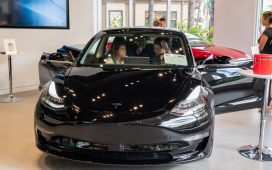Bipolar batteries eke better performance by combining the anode and cathode terminals into the same current collector. Before, the anodes and cathodes had their own collectors.
The new arrangement not only saves space, it delivers a larger current of electricity.
At scale, the cost of making the batteries is lower because they have fewer components. But right now, output is limited. The bipolar batteries are manufactured by group affiliate Toyota Industries Corp., which has only enough capacity currently for 240,000 vehicles a year.
For traditional nickel-metal hydride batteries, by contrast, Toyota sources some 1.6 million units a year, primarily from Primearth EV Energy Co. in Japan, as well as sources in China.
Okumura said it’s a misconception to think that nickel-metal hydride batteries are old and lithium ion batteries are new. Development of the two types started around the same time, he said. But it just so happens that nickel-metal hydride made it to market first.
“The public has the image that nickel-metal hydride batteries are an old battery, but actually they’re not,” Okumura said. “We started developing this new type of nickel-metal hydride battery because, after 20 years of using it, there was a record of achievement.
“But the basic design has not changed significantly,” he said. “So we decided to take on the challenge of increasing the output.”
Because of the strong current and output, the new batteries are best suited for hybrid vehicles that require quick bursts of power, as opposed to EVs that need a large energy store.
Toyota is positioning lithium ion as its main EV battery. But Toyota believes the bipolar structure could also be applied to lithium ion batteries, leading to potential improvements in those power packs.








